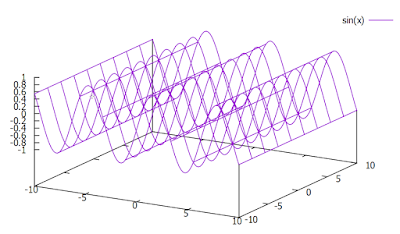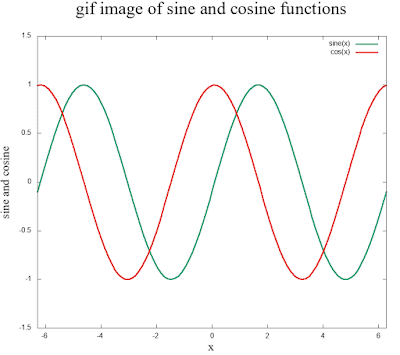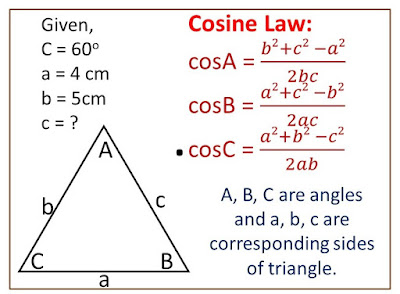first principle of derivatives
Background Concept of Derivatives
The concept of derivative in was introduced to solve problems Physics concerning motion of an object.
The credit for the development of concept of derivative and properties of a real valued function f(x) of variable x goes mainly to two famous personalities:
1.) Sir Isaac Newton(1642-1727)
He is an American Physicist and Mathematician who has contributed a lot in the field of mathematics as well as Physics.
2.) Gottfried Whilhelm Leibnitz(1646-1716)
He is a German Mathematician who has contributed a lot in the field of Mathematics.
Let's be familiar with concept of derivatives.
You have learnt Newton's law of motion in School level Physics.
You might have also learnt it in higher level Physics.
You have learnt about velocity of moving objects.
Velocity gives relation between distance travelled by an object with time taken for the travelling.
`\implies` The rate of change of displacement or distance which is magnitude of displacement, covered by a moving object per unit change in time gives velocity of that object.
Actually, velocity is nothing but the derivative of distance with respect to time.
Suppose,
dS = change distance travelled by a moving object
dt = time taken by the object to covered distance dS.
The velocity of the object is `v` given by,
`v = \frac{dS}{dt} = \lim_{\Delta t \rightarrow 0} \frac{Delta S}{\Delta t}` ----(1)
Where `\Delta S` is small increment or change in distance S and `\Delta t` is small increment in time t.
It should be noted that change in time must be so small, almost zero, not exactly zero. That is `\Delta t \rightarrow 0`.
The ratio is `\frac{dS}{dt}` is called instantaneous ratio of distance and time. Whereas the ratio `\frac{\Delta S}{\Delta t}` is called incremental ratio of S and t. The limit of incremental ratio `\frac{\Delta S}{\Delta t}` as `\Delta t` reaches very close to 0, but not exactly zero, is called derivative of S with respect to t, denoted by velocity(`v`) or `\frac{dS}{dt}`.
Similarly, the rate of change of velocity of a moving object per unit time is called acceleration. Actually, acceleration is the derivative of velocity with respect to time, provided that change in time is very small.
`a =\frac{dv}{dt} = \lim_{\Delta t \rightarrow 0} \frac{\Delta S}{\Delta t}.`---(2)
You know Newton's Second law of motion.
This gives force that tends to either stop moving object or provide motion to rest object. If F is force applied to an object of mass m having acceleration a, then Newton's second law of motion gives,
`F = ma = m \frac{dv}{dt} = m \lim_{\Delta t \rightarrow 0} \frac{\Delta v}{\Delta t}`. -----(3)
This equation suggests that derivative is useful in Newton's law of motion, which very important topic in Physics.
Thus derivative is nothing but simply the measure of change in value of a function with change in value of its variable, provided that change in value of variable is very small.
First Principle of Differentiation:
The process of finding the derivative of a function with respect to its variable is called differentiation. The derivative of a function is also called coefficient of differentiation or differential coefficient.
Suppose that f(x) is a real valued function of x defined in a domain D such that `x \in D`.
Let `\Delta x` and `\Delta y` be small increments (change) in x and y = f(x) respectively.
Then derivative of function y = f(x) with respect to x is given by
`\frac{d y}{d t} = \lim_{\Delta x \rightarrow 0} \frac{f(x + \Delta x) - f(x)}{\Delta x}` ----(4)
provided that the limit exists.
This is called the First Principle of Differentiation.
If `\Delta x` is replaced by h, then
`\frac{d y}{d t} = \lim_{h \rightarrow 0} \frac{f(x + h) - f(x)}{h}` -----(5)
Examples
Q. Find the derivatives of given functions from first principle.
1. ) x and `x^n`
2.) `\frac{1}{x}`
3.) sin x
4.) x log x
5.) `e^{sin x}`
Solutions:
1.) Here,
y = f(x) = x ---(i)
Suppose, `\Delta x` and `\Delta y` be small increments in x and y respectively. Then
`\implies` `y + \Delta y = x + \Delta x`
or, `\Delta y = x + \Delta x - y`
or, `\Delta y = x + \Delta x - x`
or, `\Delta y = \Delta x`
or, `\frac{\Delta y}{\Delta x} = 1`
Taking limit as `\lim_{\Delta x \rightarrow 0}` on both sides,
`\lim_{\Delta x \rightarrow 0} \frac{\Delta y}{\Delta x} = \lim_{\Delta x \rightarrow 0} 1`
or, `\lim_{\Delta x \rightarrow 0} \frac{\Delta y}{\Delta x} = 1`
But `\frac{d y}{d x} = \lim_{\Delta x \rightarrow 0} \frac{\Delta y}{\Delta x} `
`\therefore` `\frac{dy}{dx} = 1`.
Thus the derivative of function x is 1.
Alternatively,
From first principle of differentiation, we have
`\frac{d y}{d x} = \lim_{\Delta x \rightarrow 0} \frac{f(x+\Delta x) - f(x) }{\Delta x}`
or, `\frac{d y}{d x} = \lim_{\Delta x \rightarrow 0} \frac{x + \Delta x - x }{\Delta x}`
or, `\frac{d y}{d x} = \lim_{\Delta x \rightarrow 0} \frac{ \Delta x}{\Delta x}`
or, `\frac{d y}{d x} = \lim_{\Delta x \rightarrow 0} 1`
`\therefore` `\frac{d x}{d x} = 1`.
Also,
Let y = f(x) = `x^n`
Using first principle we have
`\frac{d y}{d x} = \lim_{\Delta x \rightarrow 0} \frac{f(x + \Delta x )- f(x) }{\Delta x}`
or, `\frac{d y}{d x} = \lim_{\Delta x \rightarrow 0} \frac{(x + \Delta x)^n - x^n }{\Delta x}` ---(ii)
We have to use relation,
`\lim_{u \rightarrow a} \frac{u^n - a^n }{u - a} = 1`
Therefore taking (ii) into above form,
Here `u = x + \Delta x` and a = x, then
`\frac{d y}{d x} = \lim_{(x +\Delta x) \rightarrow x} \frac{(x + \Delta x)^n - x^n }{(x + \Delta x) - x}`
or, `\frac{d y}{d x} = n x^{n-1}`.
`\therefore` `\frac{d x^n}{d x} = n x^{n-1}`.
2.) Here,
y = f(x) = `\frac{1}{x}`
Using the first principle,
`\frac{d y}{d x} = \lim_{\Delta x \rightarrow 0} \frac{f(x+\Delta x) - f(x)}{\Delta x}`
or, `\frac{d y}{d x} = \lim_{\Delta x \rightarrow 0} \frac{\frac{1}{x + \Delta x} - \frac{1}{x} }{\Delta x}`
or, `\frac{d y}{d x} = \lim_{\Delta x \rightarrow 0} \frac{\frac{x - (x+\Delta x)}{x (x+\Delta x)} }{\Delta x}`
or, `\frac{d y}{d x} = \lim_{\Delta x \rightarrow 0} \frac{- \Delta x}{\Delta x \times x \times (x+\Delta x)}`
or, `\frac{d y}{d x} = \lim_{\Delta x \rightarrow 0} \frac{- 1 }{x \times (x + \Delta x)}`
or, `\frac{d y}{d x} = \frac{- 1 }{x \times x }`
or, `\frac{d y}{d x} = - \frac{1}{x^2}`
`\therefore` `\frac{d }{dx} (\frac{1}{x}) = - \frac{1}{x^2} `.
3.) Here
y = f(x) = sin x
Using first principle,
`\frac{d y}{d x} = \lim_{\Delta x \rightarrow 0} \frac{f(x + \Delta x) - f(x) }{\Delta x}`
or, `\frac{d y}{d x} = \lim_{\Delta x \rightarrow 0} \frac{sin(x + \Delta x) - sin(x) }{\Delta x}`
or, `\frac{d y}{dx} = \lim_{\Delta x \rightarrow 0 } \frac{2 sin(\frac{x+\Delta x - x}{2}) cos(\frac{x+\Delta x + x}{2})}{\Delta x} `
or, `\frac{d y}{d x} = \lim_{\Delta x \rightarrow 0} 2 \frac{sin(\frac{\Delta x}{2}) cos(x + \frac{\Delta x}{2}) }{\Delta x}`
or, `\frac{d y}{d x} = 2 \times cos(x + 0 ) \lim_{\Delta x \rightarrow 0} \frac{sin(\frac{\Delta x}{2})}{\Delta x}`
`\frac{d y}{d x} = cos x \times \lim_{\frac{\Delta x}{2} \rightarrow 0} \frac{sin(\frac{\Delta x}{2})}{\frac{\Delta x}{2}}`
But, `\lim_{x \rightarrow 0}\frac{sin x}{x} = 1`, so
`\implies``\lim_{\frac{\Delta x}{2} \rightarrow 0} \frac{sin(\frac{\Delta x}{2})}{\frac{\Delta x}{2}} = 1`
`\therefore` `\frac{d y}{d x} = cos x \times (1)`
`\therefore` `\frac{d }{dx} sin x = cos x` .
Similarly,
`\frac{d}{dx} cos x = - sin x`. Try yourself.
4.) Here,
y = f(x) = x logx
Using the first principle,
`\frac{d y}{d x} = \lim_{\Delta x \rightarrow 0} \frac{f(x+\Delta x) - f(x)}{\Delta x} `
`\implies` `\frac{d y}{d x} = \lim_{\Delta x \rightarrow 0} \frac{ (x+\Delta x)log(x+\Delta x)- xlogx f(x)}{\Delta x} `
`= \lim_{\Delta x \rightarrow 0} \frac{x log(x+\Delta x) + \Delta x log(x+\Delta x) - x log x}{\Delta x}`
`= \lim_{\Delta x \rightarrow 0} \frac{x [log(x+\Delta x) - log x] + \Delta x log(x+\Delta x)}{\Delta x} `
`= \lim_{\Delta x \rightarrow 0} \frac{x log(\frac{x+\Delta x}{x}) + \Delta x log(x+\Delta x)}{\Delta x}`
`= \lim_{\Delta x \rightarrow 0} \frac{x log(\frac{x+\Delta x}{x})}{\Delta x} + lim_{\Delta x \rightarrow 0} \frac{\Delta x log(x+\Delta x)}{\Delta x}`
`= x lim_{\Delta x \rightarrow 0} \frac{log(1+ frac{\Delta x}{x})}{\Delta x} + lim_{\Delta x \rightarrow 0} log(x+\Delta x)`
`= lim_{\frac{\Delta x}{x} \rightarrow 0} frac{log(1+\frac{\Delta x}{x})}{\frac{\Delta x}{x}} + logx`
But `\lim_{x \rightarrow 0} \frac{log(1+x)}{x} = 1`, using this in first term,
`= 1 + log x`
`\therefore` `\frac{d}{d x} x logx = 1+ logx`.
5.) Here,
y = f(x) = `e^{sin x}`
Using the first principle, derivative of y with respect to x is given as
`\frac{d y}{d x} = \lim_{\Delta x \rightarrow 0} \frac{f(x+\Delta x) - f(x)}{\Delta x} `
`= \lim_{\Delta x \rightarrow 0} \frac{e^{sin(x+\Delta x)} - e^{sin x}}{\Delta x}`
Now put `u = sin x` and `u + k = sin(x+\Delta x)` so that `\Delta x \rightarrow 0` implies `k \rightarrow 0`.
`= \lim_{k \rightarrow 0} \frac{e^{u+k} - e^u}{k} \frac{k}{\Delta x}`
`= \lim_{k \rightarrow 0} e^u \frac{e^k - 1}{k} \frac{sin(x+\Delta x) - u}{\Delta x} `
`= e^u \lim_{k \rightarrow 0} \frac{e^k - 1}{k} \times \lim_{\Delta x \rightarrow 0} \frac{sin(x+\Delta x) - sin x}{\Delta x} `
But `\lim_{k \rightarrow 0} \frac{e^k - 1}{k} = 1`,
`= e^u \times \lim_{\Delta x \rightarrow 0} \frac{2 sin(\frac{x+\Delta x - x}{2}) cos(\frac{x+\Delta x+ x}{2})}{\Delta x}`
`= e^{sin x} \times \lim_{\Delta x \rightarrow 0} 2 \frac{sin(\frac{\Delta x}{2}) \dot cos(\frac{2x+\Delta x}{2})}{\Delta x}`
`= e^{sin x} cos(\frac{2x+0}{2}) \times \lim_{\frac{\Delta x}{2} \rightarrow 0} \frac{sin(\frac{\Delta x}{2})}{\frac{\Delta x}{x}}`
But `\lim_{\frac{\Delta x}{2} \rightarrow 0} \frac{sin(\frac{\Delta x}{2})}{\frac{\Delta x}{2}} = 1`,
`= e^{sin x} cos x \times 1 `
`= e^{sin x} cos x`
`\therefore` `\frac{d}{d x} e^{sin x} = e^{sin x} cos x`.
Follow This Site for more updates on Science and Technology.








Comments
Post a Comment